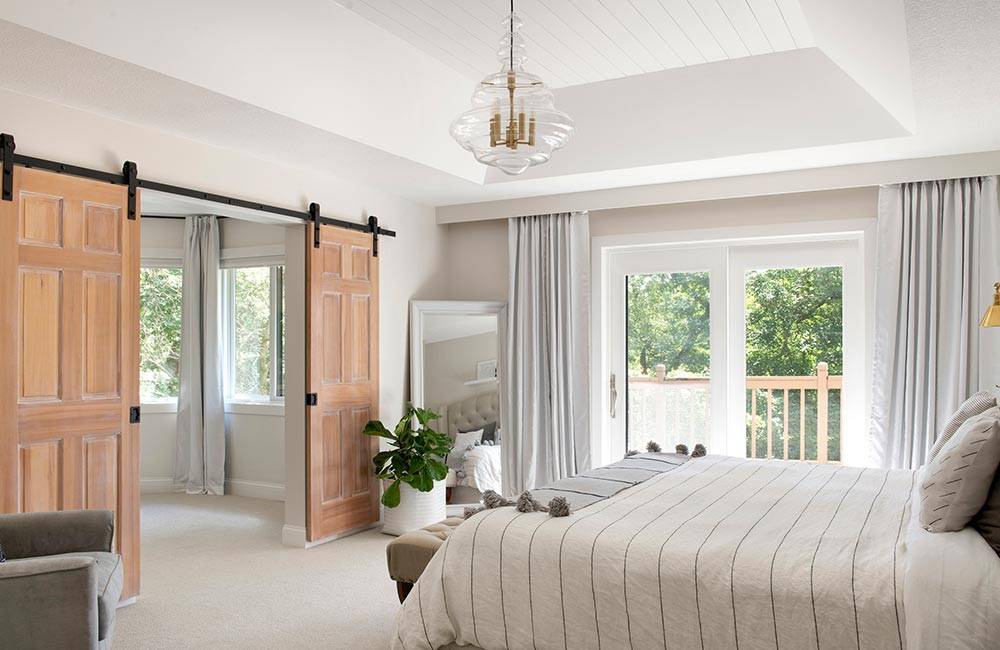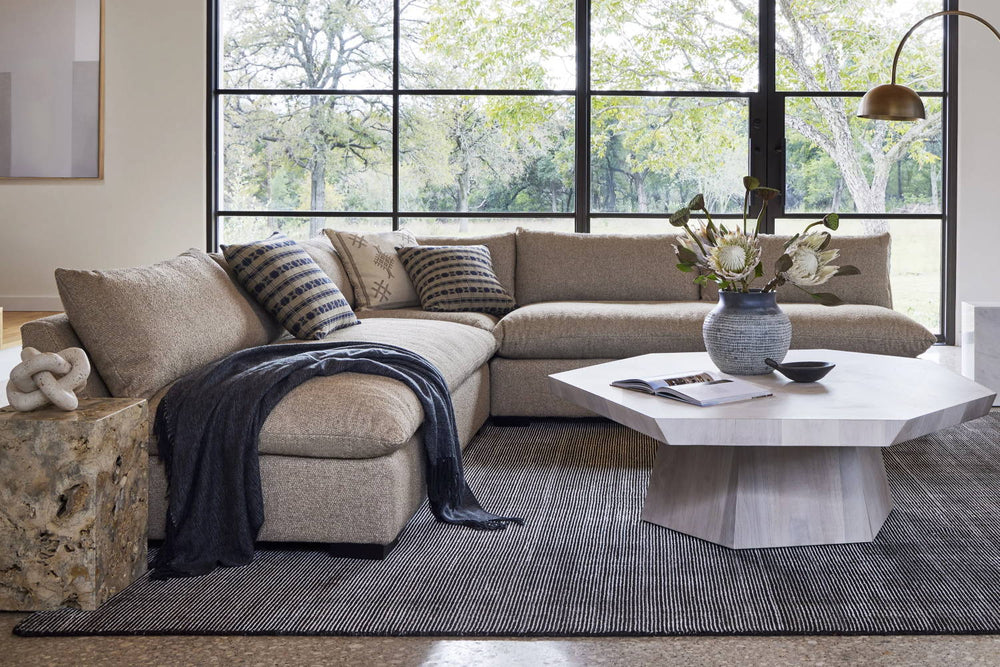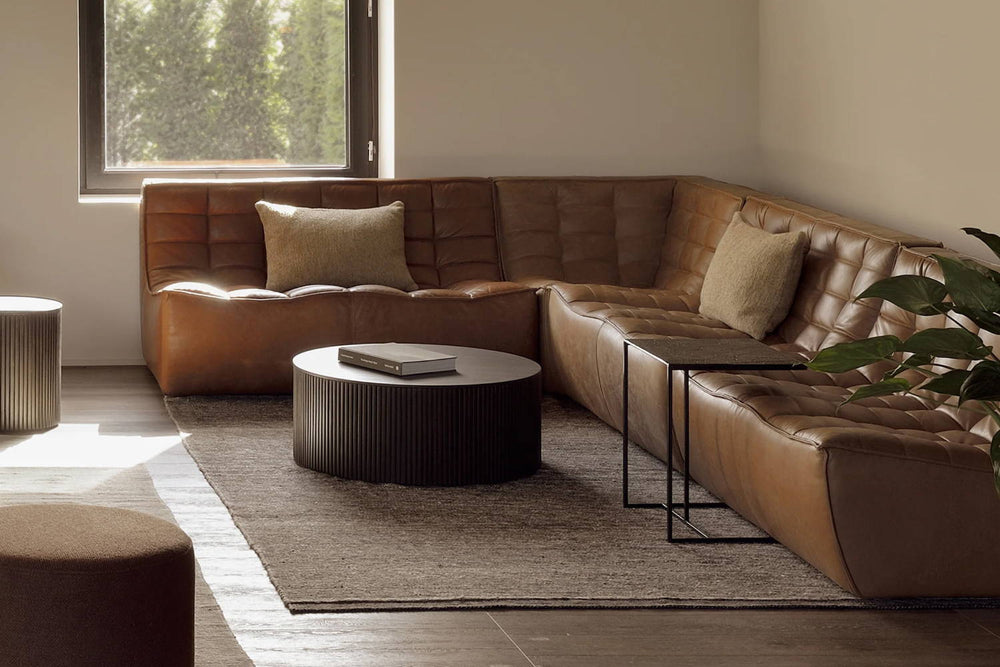Hudson Coffee Table by Four Hands
When it comes to interior design and furniture arrangement, one question often arises: Does a coffee table need to be centered? The placement of a coffee table in your living space can significantly impact the overall aesthetics and functionality of the room. In this exploration, we will delve into the art of coffee table positioning, discussing the pros and cons of centering it, and exploring alternative placement options that can enhance the visual appeal and usability of your living area. So, whether you're a stickler for symmetry or looking to break free from convention, join us on this journey to discover the perfect coffee table placement for your unique style and needs.
Distinct Coffee Table by Ferm Living
Does a Coffee Table Have to be Centered in Front of the Sofa?
Short answer, no, a coffee table does not have to be centered in front of the sofa. While centering the coffee table is a common approach in interior design, it's not a strict rule. The placement of the coffee table should primarily depend on your specific needs, the layout of your room, and your personal design preferences. Here are a few considerations to help you decide where to place your coffee table:
- Room Layout: The layout of your room, including the size and shape, can influence the placement of the coffee table. In some cases, it might make more sense to position the coffee table off-center, especially if you have other furniture pieces or architectural features that affect the room's flow
- Functional Considerations: Think about how you intend to use the coffee table. If it's primarily for serving snacks and drinks while watching TV, positioning it in front of the sofa might be practical. However, if you also want to use it for decorative purposes or as a place to display items, you can place it slightly to the side or at an angle to the sofa
- Visual Balance: While centered coffee tables can provide a sense of balance and symmetry, an asymmetrical placement can add visual interest and uniqueness to your space. Experiment with different placements to find what feels most aesthetically pleasing to you
- Traffic Flow: Ensure that the placement of the coffee table doesn't impede the natural flow of traffic in the room. Leave enough space for people to move around comfortably
In the end, your coffee table's placement should enhance the functionality and aesthetics of your living space while aligning with your personal style. Feel free to deviate from the traditional centered position if it better suits your needs and complements your overall design vision.
Good Times Coffee Table by Blu Dot
Where Should I Place the Coffee Table in My Living Room?
The ideal placement for your coffee table in your living room depends on various factors, including the size and shape of your room, the arrangement of your furniture, if you have an area rug, and your personal preferences. Here are some common placement options to consider:
- Centered in Front of the Sofa: This is the traditional placement, with the coffee table centered directly in front of the sofa. It provides a balanced and symmetrical look and is convenient for serving snacks, drinks, and placing items within easy reach. Make sure there is enough space between the coffee table and the sofa for comfortable movement
- Slightly Off-Center: Placing the coffee table slightly to one side of the sofa can create a more dynamic and visually interesting arrangement. This is a great option if you want to add a touch of uniqueness to your space. Just ensure that it doesn't disrupt the flow of the room
- Between Multiple Seating Pieces: If you have multiple seating areas or a sectional sofa, consider placing the coffee table in the center of these seating pieces to serve as a focal point for the entire seating arrangement. This can encourage interaction and create a cohesive look
- In a Conversation Area: If you have a grouping of designer lounge chairs or a cozy corner for conversations, position the coffee table in the center of this area. This arrangement encourages face-to-face interaction and makes the space feel intimate
- Angled Placement: Another option is to angle the coffee table diagonally in front of the sofa or seating area. This can add a sense of movement and energy to the room and may work well in spaces with an irregular layout
Remember to leave enough clearance space around the coffee table for easy movement and to prevent overcrowding. Additionally, consider the function of the coffee table. If it's primarily for decoration, you have more freedom in its placement. Ultimately, choose the placement that best suits your lifestyle and enhances the overall look and functionality of your living room.
Reese Coffee Table by Arteriors
Whether a coffee table needs to be centered ultimately depends on your individual style, the layout of your space, and your personal preferences. Centering a coffee table can create a sense of balance and symmetry in a room, making it a classic choice for many interior designs. However, breaking away from this convention can also lead to innovative and unique arrangements that cater to your specific needs and creative vision. Consider the purpose of your coffee table, the flow of foot traffic, the seating arrangement, and the overall design concept of your space when making this decision. Whether you choose to center your coffee table or place it off-center, remember that interior design is about expressing your personality and creating a comfortable and functional environment that suits your lifestyle. So, don't be afraid to think outside the box and let your individual style shine through in your home decor choices.








